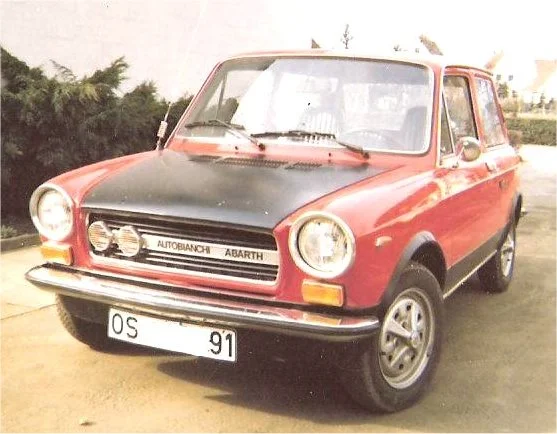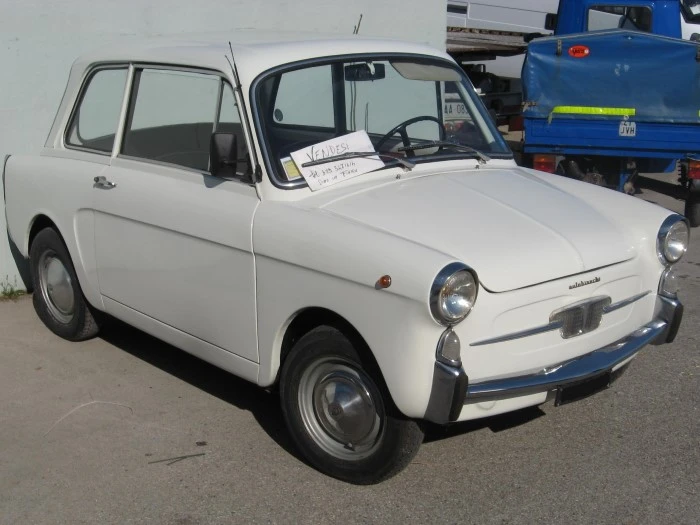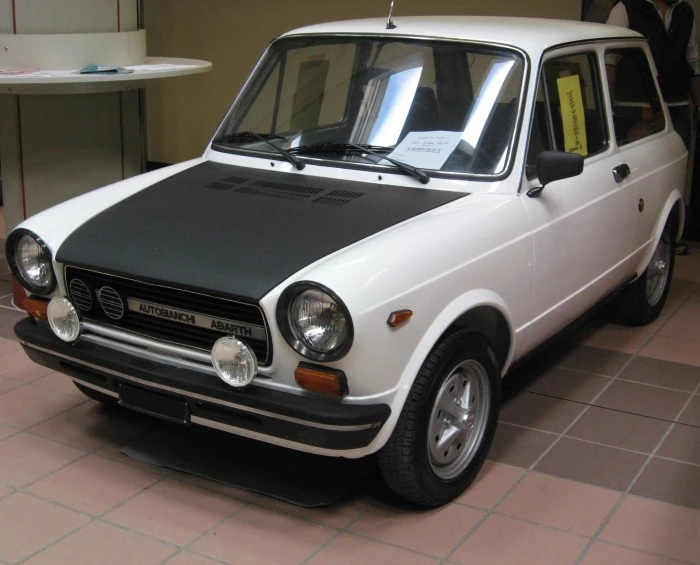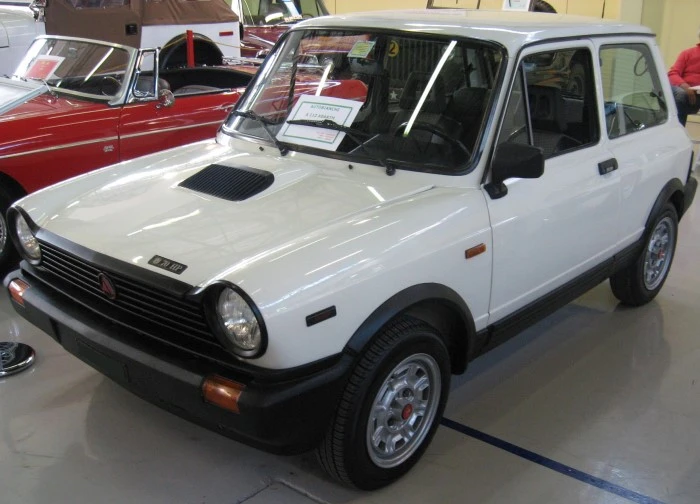Autobianchi Tyres

1972 Autobianchi A112 Abarth
Autobianchi History

Autobianchi Bianchina Berlina
Autobianchi was an Italian automotive company founded in 1955 by Bianchi, Pirelli, and Fiat. During its existence, Autobianchi developed just a few models, most of which were tiny automobiles, the most notable of which being the short-lived Autobianchi A111, a compact family car. Autobianchis were more expensive than Fiat models of comparable size, and Fiat utilised the brand to test novel technologies that subsequently made their way into standard Fiat vehicles, such as fibreglass bodywork and front-wheel drive.
Bianchi, founded in 1885 by Edoardo Bianchi and well known for its bicycles, was also a passenger automobile manufacturer beginning in 1899. Bianchis were generally high-end luxury vehicles built with meticulous attention to detail. During WWII, the bombing damaged the company's facility in Abruzzi. Edoardo Bianchi died in a vehicle accident in 1946, and the business was passed down to his son, Giuseppe. Despite the fact that a new, sophisticated plant was built in Desio after the war, economic difficulties prompted Giuseppe to focus on bicycles, motorcycles, and commercial vehicles rather than passenger cars.

Autobianchi A112 Abarth
Ferruccio Quintavalle, the general manager of Bianchi, intended to capitalise on the company's significant experience in automobile manufacture and ordered the development of prototypes of potential new models. It soon became clear that restarting passenger automobile production would require the assistance of a more powerful partner. As a result, Bianchi approached huge industrial conglomerates Fiat and Pirelli with a plan to start a new firm to manufacture vehicles. Thus, the Autobianchi firm was founded on 11 January 1955, with an agreement signed by the three parties and share capital of 3 million lire, 33 per cent of which went to the Bianchi family. In Desio, a new, contemporary, purpose-made factory for the manufacturing of Autobianchi vehicles was established over an area of 140,000 square metres.
Each of the participants had a distinct job and stake in the enterprise. Fiat was to supply the technological foundation and materials for the automobiles' assembly. It was attempting to conquer the premium segment of the small car market, which was filled at the time by coachbuilders like as Moretti and Vignale, who built their vehicles on Fiat chassis. Pirelli, who was going to supply the tyres for the automobiles, wanted to increase their OEM market share. Bianchi was tasked with prepping the bodywork and manufacturing whole automobiles, which was a step toward their anticipated return to car production.
The new company's first automobile was the Bianchina, named after Edoardo Bianchi's first car, which was built in 1899. The Bianchina was an upmarket city vehicle, positioned above the Fiat 500 in the market, with several luxury designs and equipment characteristics. It was marketed as a "second vehicle in the household" as well as a sumptuous "recreational vehicle," and was also aimed at rich middle-class ladies. It reflected the rising prosperity in Italian culture.

Autobianchi A112 Abarth MK2
On September 11, 1957, the first Bianchina rolled off the manufacturing lines in Desio, with the distinctive body shape of a two-door landaulet named "Trasformabile." The two-door "Cabriolet" complete convertible was released in 1960, followed by a three-door estate variant, the "Panoramica," and a two-door saloon, the "Berlina." Finally, two van models were released: one that resembled a two-seater Panoramica and another with an elevated and extended cargo compartment.
Faced with a motorcycle market crisis, Bianchi was obliged to sell its stake in Autobianchi, which was eventually completely absorbed into Fiat S.p.A. in 1968. The year 1969 saw numerous significant breakthroughs for the brand. First and foremost, Bianchina manufacturing was ultimately halted. Furthermore, Autobianchi was integrated into the Fiat Group and placed under the authority of the recently acquired luxury manufacturer Lancia. Significantly, two new Autobianchi models were introduced this year: the Autobianchi A111 and Autobianchi A112, both of which were designated by internal Fiat development codes, as were previous Fiat-branded vehicles.
The A112 was in production for 17 years, with regular, and frequently significant, revisions. The final A112 was constructed in May 1986 and was replaced by the Autobianchi Y10, which was mechanically based on the Fiat Panda. Except for France and Israel until 1989, it was branded as a Lancia in most export countries, while it kept Autobianchi badging and branding in Italy. The Desio facility closed in 1992, and the Y10 was replaced by the Lancia Y (marketed as Lancia in all markets, including Italy). The Autobianchi brand was discontinued in 1996.
The Registro Autobianchi, the marque's official club in Italy, currently owns the rights to the brand.
